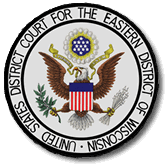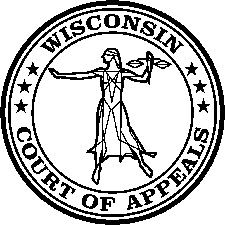This article needs additional citations for verification .(January 2014) |

There are a variety of schema for dividing Wisconsin into regions.
This article needs additional citations for verification .(January 2014) |

There are a variety of schema for dividing Wisconsin into regions.
Professor Lawrence Martin created a schema for dividing Wisconsin into geographical regions in his work "The Physical Geography of Wisconsin". [1] [2]
Three of these geographical provinces are uplands and two are lowlands. These provinces are related to the use of the land by plants, by animals, and by man. Each differs from the others in roughness or smoothness of topography, infertility or sterility of soil, in climate, in adaptation to occupation by wild plants (including forests), by cultivated plants (including crops and orchards), by animals, and by man, as well as in the extent to which men have developed such resources during the march of Wisconsin history.
The boundaries of all five provinces are determined largely by the variations of texture and structure in the underlying rocks. The geographical regions have internal unity and significant contrast with neighboring regions in uses of the land by living things, including man.

The Wisconsin DNR uses the following regions [3]
The Wisconsin DOT uses the following regions: [4]

The Eastern Ridges and Lowlands is a geographical region in the eastern part of the U.S. state of Wisconsin, between Green Bay in the north, and the border with Illinois in the south. Lake Michigan lies to the east of the region.

The United States District Court for the Eastern District of Wisconsin is a federal trial court of limited jurisdiction. The court is under the auspices of the United States Court of Appeals for the Seventh Circuit, although patent claims and claims against the federal government under the Tucker Act are appealed to the United States Court of Appeals for the Federal Circuit. The Eastern District was established on June 30, 1870.

Area codes 715 and 534 are telephone area codes in the North American Numbering Plan (NANP) for the U.S. state of Wisconsin. The numbering plan area (NPA) comprises most of the northern part of the state. 715 was one of the original North American area codes created in 1947, while 534 was added in 2010 as an additional code for the same numbering plan area to form an overlay plan.

The Wisconsin Court of Appeals is an intermediate appellate court that reviews contested decisions of the Wisconsin circuit courts. The Court of Appeals was created in August 1978 to alleviate the Wisconsin Supreme Court's rising number of appellate cases. Published Court of Appeals opinions are considered binding precedent until overruled by the Supreme Court; unpublished opinions are not. The Court hears most appeals in three-judge panels, but appeals of circuit court decisions in misdemeanor, small claims, and municipal ordinance cases are decided by a single judge.
Wisconsin's 6th congressional district is a congressional district of the United States House of Representatives in eastern Wisconsin. It is based in the rural, suburban and exurban communities between Madison, Milwaukee, and Green Bay. It also includes the village of River Hills in far northern Milwaukee County. The district is currently represented by Glenn Grothman (R-Glenbeaulah) who took office in January 2015.
Wisconsin's 8th congressional district is a congressional district of the United States House of Representatives in northeastern Wisconsin. It officially has been vacant since April 24, 2024, following the effective date of the resignation of Mike Gallagher, a Republican. Gallagher won the open seat vacated by Reid Ribble who retired in 2016. It is also one of only two congressional districts to ever elect a Catholic priest, in the case of Wisconsin’s 8th, Robert John Cornell.
TheNew North, Inc. is a consortium of business, economic development, chambers of commerce, workforce development, civic, non-profit, and education leaders in the 18-county region of Northeast Wisconsin known as "The New North."

The 2008 United States presidential election in Wisconsin took place on November 4, 2008, as part of the 2008 United States presidential election in which all 50 states plus the District of Columbia participated. State voters chose 10 electors to represent them in the Electoral College via a popular vote pitting Democratic U.S. Senator from Illinois Barack Obama, and his running mate U.S. Senator from Delaware Joe Biden, against Republican challenger and U.S. Senator from Arizona John McCain and his running mate, Alaska Governor Sarah Palin.
The Bay-Lakes Council is the Boy Scouts of America (BSA) council serving eastern Wisconsin and the Upper Peninsula of Michigan. Headquartered in Appleton, Wisconsin, it is geographically one of the largest local BSA councils. Bay-Lakes Council #635 was formed on July 1, 1973, the product of a merger between six east Wisconsin councils. The council is served by Kon Wapos Lodge of the Order of the Arrow.
The 1st Senate District of Wisconsin is one of 33 districts in the Wisconsin Senate. Located in northeast Wisconsin, the district comprises all of Door and Kewaunee counties, as well as nearly all of Calumet County, much of northern and western Manitowoc County and eastern and southern Brown County, along with parts of southwest Outagamie County. It includes the cities of Sturgeon Bay and Chilton and parts of the cities of Appleton, Menasha and Green Bay.

The 2000 United States presidential election in Wisconsin took place on November 7, 2000, and was part of the 2000 United States presidential election. Voters chose 11 representatives, or electors to the Electoral College, who voted for president and vice president.

The 1996 United States presidential election in Wisconsin took place on November 5, 1996, as part of the 1996 United States presidential election. Voters chose 11 representatives, or electors to the Electoral College, who voted for president and vice president.

The 2012 United States presidential election in Wisconsin took place on November 6, 2012, as part of the 2012 United States presidential election in which all 50 states plus the District of Columbia participated. Wisconsin voters chose 10 electors to represent them in the Electoral College via a popular vote pitting incumbent Democratic President Barack Obama and his running mate, Vice President Joe Biden, against Republican challenger and former Massachusetts Governor Mitt Romney and his running mate, Congressman Paul Ryan.

Landmark Credit Union is an American credit union providing banking services in Southern Wisconsin. It operates as a cooperative and is owned by its members. Landmark provides banking services including, savings accounts, checking accounts, mortgages and investments.

The 1968 United States presidential election in Wisconsin was held on November 5, 1968, as part of the 1968 United States presidential election. State voters chose 12 electors to the Electoral College, who voted for president and vice president.

The Tenth Wisconsin Legislature convened from January 14, 1857, to March 9, 1857, in regular session.